Tire Air Pressure and Wear
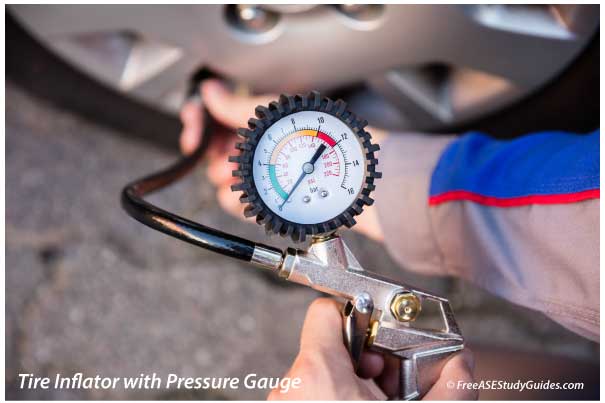
Inflate tires according to the manufacturer's specifications on the door plate or the vehicle's manual. Never exceed the maximum pressure indicated on the sidewall.
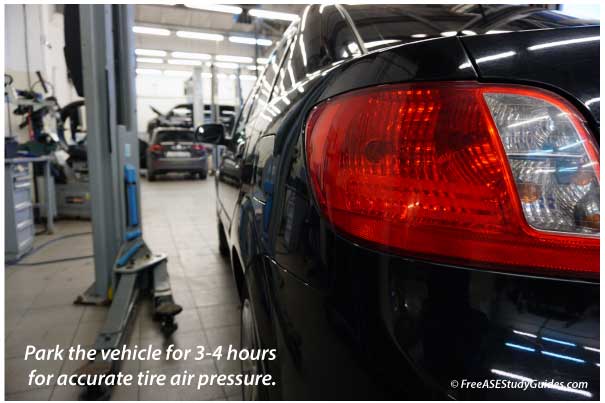
For accuracy, manufacturers typically recommend checking and inflating the tire after the vehicle has been parked for a few hours because tire temperature affects the tire's air pressure.
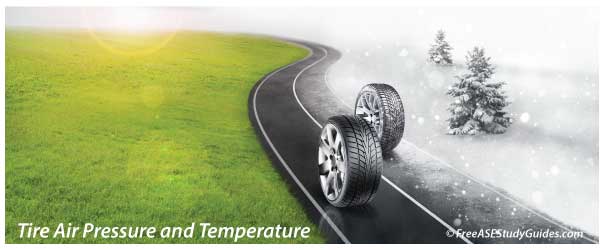
Driving causes the air pressure in the tires to increase as the tire temperature increases (TP = OTP +/− TP x (TempCh/10) x .02). The air pressure increases by ~ one or two psi for every ten-degree increase in temperature. Conversely, tire pressure decreases as the outside (ambient) temperature drops.
Overinflated Tire Wear
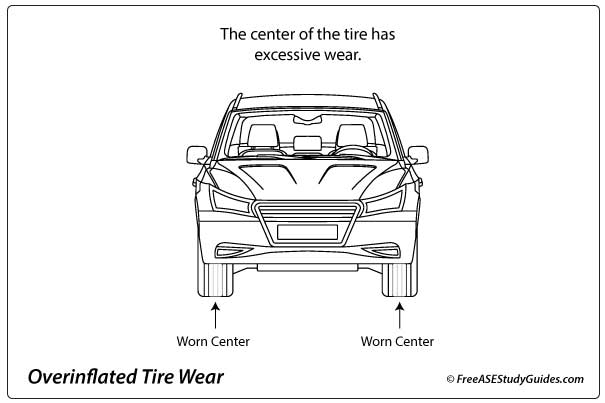
Overinflating a tire causes less tread to contact the road surface, poor performance, and fuel mileage problems. The sidewalls are firmer than intended, increasing road shock that can be felt in the ride and increasing stresses placed on suspension components. The center of an overinflated tire will wear faster than the shoulders, resulting in uneven wear.
Underinflated Tire Wear
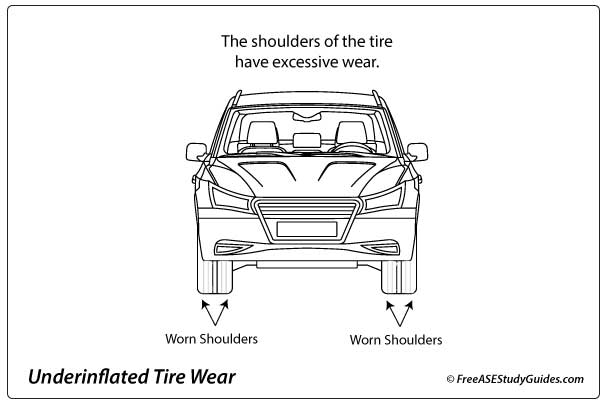
Underinflated tires wear on the shoulders or outside edges. There is insufficient contact with the center and excessive contact with the tire's outer edges.
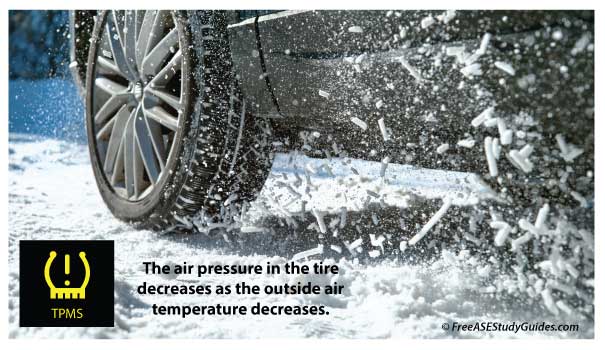
Cold weather causes tire air pressure to drop. The TPMS monitors low tire air pressure and may illuminate the TPMS warning light. The tire's air pressure drops one or two pounds for every ten-degree drop in temperature.